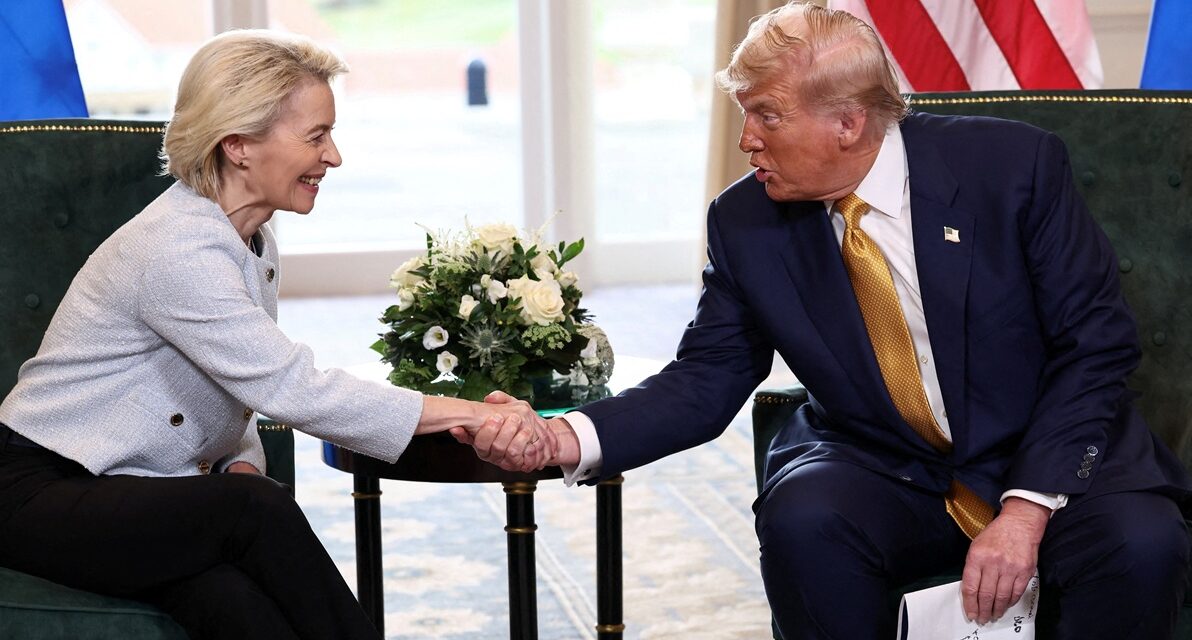
Which Country Got the Better Deal in 2025?

US-EU vs UK-US Trade Deal: Which Country Got the Better Deal in 2025?
In July 2025, trade tensions between the United States and its major allies reached another critical point. Former President Donald Trump’s administration struck a fresh agreement with the European Union, narrowly avoiding harsh 30% tariffs but still imposing 15% tariffs on EU goods. Meanwhile, the UK, working under an earlier bilateral agreement, continues to face a 10% tariff on US-bound exports.
This raises the question: Did the UK secure a better deal than the EU? And what does this mean for businesses and the broader economy? Let’s break it down.
Understanding the Tariff Breakdown
-
EU Tariff: 15% on most goods entering the US. Avoided the initially proposed 30%.
-
UK Tariff: 10% on goods, but with important quota limitations, especially in sectors like automotive.
Car Exports: A Closer Look
-
UK car exports to the US: Subject to 10% tariff, but only up to 100,000 vehicles annually.
-
Exports above that face a steep 25% tariff.
-
-
EU car exports to the US: All face the 15% tariff, regardless of volume.
-
In 2024, the EU exported nearly 758,000 vehicles to the US — 7x more than the UK.
-
➡️ Verdict: UK has a lower rate, but the EU’s larger scale and absence of a quota may offer stability for high-volume exporters.
️ What About Steel and Pharmaceuticals?
️ Steel

US-EU vs UK-US Trade Deal: Which Country Got the Better Deal in 2025?
-
UK steel: Currently under a 25% tariff, lower than the global standard 50%.
-
A quota deal is in progress to allow UK exports with no or reduced tariffs.
-
-
EU steel: Still faces the 50% global tariff, but negotiations continue for a similar quota-based exemption.
Pharmaceuticals
-
UK: Deal includes a promise to negotiate exemptions, but nothing concrete yet.
-
EU: Mixed signals — President Trump hinted at exemptions, but the EU Commission has not confirmed.
➡️ Verdict: The UK may hold a slight short-term advantage, especially in steel. Long-term outcomes depend on successful negotiations.
Will UK Benefit from the EU’s Loss?
With the EU facing higher tariffs, UK goods might appear more competitively priced in the American market. However, experts warn against over-optimism:
“Modern supply chains won’t shift production over marginal tariff differences,” says David Henig of ECIPE.
Even if UK goods are cheaper, uncertainty around US trade policy under Trump means firms may hesitate to restructure operations or move production to the UK.

US-EU vs UK-US Trade Deal: Which Country Got the Better Deal in 2025?
Wider Economic Impacts
-
The US is the UK’s largest single national trade partner, with £196bn in exports in 2024.
-
However, EU markets collectively account for £358bn, making them far more significant overall.
“If the EU slows down due to weaker US demand, it could hit UK exports too,” warns Stephen Millard of the NIESR.
In Summary:
-
UK might enjoy short-term advantages in car and steel exports, due to lower tariffs and quotas.
-
EU faces higher baseline tariffs, but may benefit from larger export volumes and future negotiations.
-
Business decisions are unlikely to shift quickly without long-term policy certainty.
Final Thoughts
The UK-US trade deal in 2025 offers limited but strategic benefits for UK exporters, especially compared to the EU’s broader, yet harsher, deal. But global trade is dynamic. What looks like a win today could easily shift tomorrow — especially with Trump back in the White House and US trade policy in flux.
As more details of the EU-US deal emerge, the picture will become clearer. For now, UK exporters should watch closely — and be ready to adapt.

















